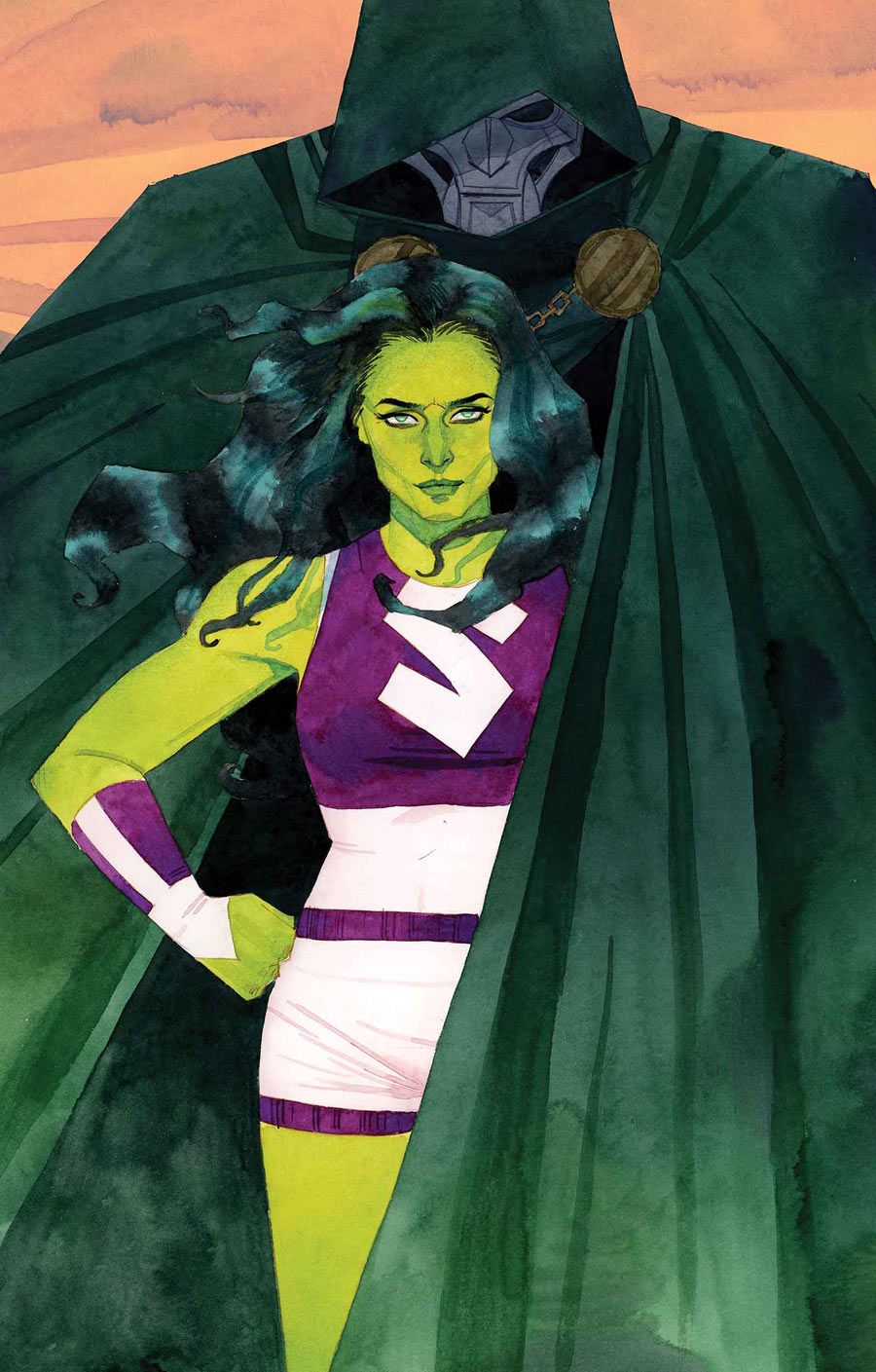In "She-Hulk" #3, Charles Soule presents Jennifer Walters with her first client -- Kristoff Vernard, the son of Victor von Doom -- who desires to defect to the United States. As she does with superheroics, Walters leaps headfirst into establishing her client's case and Soule makes the most of the adventure, reaping moments of humor and celebrating absurd situations, which include She-Hulk being ejected from a limousine, being swarmed by Doombots and taking a Fantasticar from JFK to Manhattan.
Soule injects each scene with humor and wit, celebrating the fact that these scenes, stitched together around the plot of trying to represent a defector in his quest for citizenship, can only happen in the pages of a comic book. The writer doesn't spend time psychoanalyzing his charges, preferring instead to let their actions and attitudes define the characters for the reader. Soule adds layers to the story by inserting details surrounding the legal side of proceedings and bringing a battle-weary She-Hulk before the judge to plead Kristoff's case.
Providing visuals for Soule's story is artist Javier Pulido, whose deceptively simple style is packed with subtleties and attitude, from Hei Hei the monkey taking a memo during She-Hulk's interview with Kristoff to everyone in the coffee shop bowing their heads and staring at their phones where no one even notices She-Hulk there, despite her "disguise" of sunglasses and an overcoat. Pulido lets Kristoff's attitude carry the character throughout the issue, from his closed-off, crossed arms and legs sitting position during his attorney-client interview with She-Hulk to his non-chalant dumping of the coffee She-Hulk bought for him. Pulido's She-Hulk isn't a swimsuit model or a bombshell trapped in a comic book superhero plot. She-Hulk is a realistic woman with natural curves and reasonable (for a Hulk) dimensions. Pulido's style is much more cartoony in expressions and body language for the characters as he chooses to refrain from overloading any character with too much detail. Muntsa Vicente's colors fit Pulido's art nicely, giving "She-Hulk" #3 a Sunday Comics feel, joining Soule's story in celebrating things that can only happen through the wonder and imagination of comics. Rounding out the visuals, Soule's provides a real workout for Clayton Cowles. The dialog gets excessive at points, threatening to overwhelm the art, but Pulido and Cowles mesh cleanly enough without overly compromising from either side.
"She-Hulk" #3 is denser than standard superhero slugfests, but it serves as a nice diversion from "the usual" while maintaining superheroic attitude. Under Soule this series is a solid thematic heir to Dan Slott's work with the character. Soule builds on that, giving She-Hulk new, bizarre challenges and furnishing readers with legally leveraged adventures that are associated with the Marvel Universe enough to remain interesting and entertaining.

